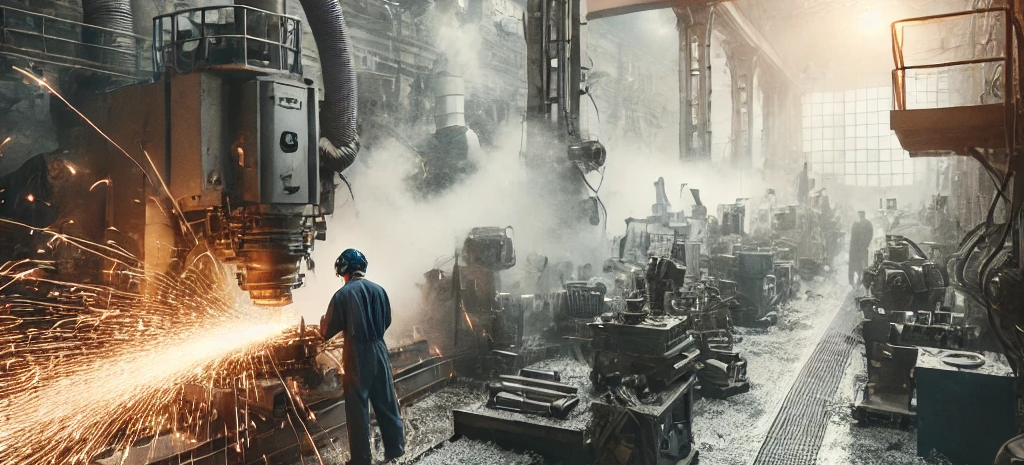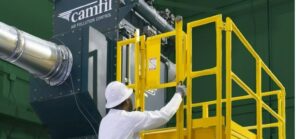In a recent episode of the “Engineering Influence Podcast” hosted by the American Council of Engineering Companies, dry filtration product manager Randi Huckaby at Camfil Air Pollution Control shared valuable insights on indoor air quality (IAQ) in industrial manufacturing spaces and what engineers should keep in mind when designing these facilities.
Huckaby emphasized how manufacturing processes affect IAQ, often leading to more polluted air indoors than outdoors. Many contaminants in these enclosed spaces go unnoticed until they cause obvious health problems or operational inefficiencies. To address this, Huckaby stressed the importance of prioritizing IAQ in designing and managing facilities – whether constructing new buildings or expanding existing ones.
Watch the full podcast on these platforms:
- Podbean: Unmasking the Invisible: Indoor Air Quality's Impact on Health
- YouTube: Unmasking the Invisible: Indoor Air Quality's Impact on Health
Key Causes of Poor IAQ
In this podcast, Huckaby highlighted several factors contributing to poor IAQ. For example, neglected HVAC systems can accumulate particulate matter over time and circulate polluted air. Structural issues such as cracks, leaks and unsealed openings allow contaminants to infiltrate indoor spaces. Likewise, personnel and vehicles entering and exiting facilities introduce airborne contaminants. Most significantly, industrial processes like metal cutting, woodworking and food production generate hazardous particulates that degrade air quality.
Health Impacts of Poor IAQ
Huckaby explained that the health effects of poor IAQ often begin with mild symptoms such as headaches, congestion, coughs and eye or skin irritation, which workers may mistake for allergies or a common cold. However, prolonged exposure to dangerous materials like silica and hexavalent chromium can lead to severe conditions including silicosis, respiratory diseases and even cancer. Emerging concerns include airborne vapors and particles from polyfluoroalkyl substances (PFAS), also known as “forever chemicals.” According to the U.S. EPA, scientific research suggests that certain PFAS may pose health risks. Ongoing studies aim to better understand how different types of PFAS exposure impact health.
Regulations, Guidelines and Standards Governing IAQ
In addition, Huckaby notes the regulatory framework that supports IAQ, including:
- The Clean Air Act, which provides legal authority for federal programs regarding air pollution control.
- OSHA requirements and EPA guidelines for IAQ.
- Industry-specific standards from organizations like ASHRAE for ventilation system design and acceptable workplace IAQ and MSHA for mining operations.
Engineering Solutions With Camfil
Camfil is a trusted partner for engineering firms seeking effective IAQ solutions. According to Huckaby, the collaboration begins with a thorough assessment to identify the type and size of particulates generated by industrial processes. From there, the team selects the most suitable dust collection system and filtration technology for the specific application. These solutions are then aligned with industry regulations and insurance requirements to ensure compliance.
Optimizing system design and equipment selection are key to Camfil’s approach. Whether the customer needs oil mist collectors, dry dust systems or modular upgrades, Camfil tailors its systems to meet each customer’s unique requirements. The company also supports engineers with on-site tests and beta trials to optimize dust collector performance and longevity. Huckaby recommends engineers involve IAQ experts early in the design phase to streamline implementation and compliance while ensuring efficient solutions.
Conclusion
IAQ is a fundamental aspect of engineering design and facility management. With decades of expertise in industrial dust collection and air filtration, Camfil provides proven solutions to create cleaner, safer facilities.
For more information on Camfil’s offerings and to connect with their experts, contact Camfil APC. Whether designing a new facility or upgrading an existing one, taking a collaborative, informed approach to IAQ will yield significant benefits for both health and productivity.
 Americas
Americas 




